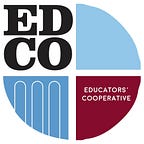Stepping Into the Null: Teaching Anxiety, Mindfulness, Gratitude, and Loving Kindness
Originally published by Lizzi Ammerman, first grade teacher at the University School of Nashville, on September 19, 2017 at https://educatorscooperative.com/2017/09/19/stepping-into-the-null/
One of the reasons I was drawn to USN, as both a parent and educator, was the Mindfulness Curriculum. This was originally started in the Middle School, but is supported in the Lower School by the introduction to metacognitive thinking strategies and growth mindset activities delivered to kindergartners in the “Brain Flex” class, then taught once a week by the Assistant Head of Lower School, Josie Robins.
Incoming kindergartens to my first class at USN therefore had many positive coping skills when faced with difficult tasks, disappointment, and mistake-making. Once, after misplacing a stack of materials for the upcoming lesson, I exclaimed under my breath, “I just cannot get organized!” A few of my students then warmly encouraged, “Yet! Ms. Ammerman!” “Say: I just can’t get organized, YET!”
However, I began to notice that these skills didn’t always serve some of my anxious students in times of worry. I heard of a session offered at the Annette Eskind Institute of Learning entitled, “Scaredy Cats, Worry Worts, and Chicken Littles — Oh My!” Led by Jennifer Seay and Allison Bender, the talk was aimed at parents and teachers alike, but was more educational than curricular. It was also well worth the time spent preparing for a half day substitute.
When I returned to school the following morning, my curious first graders barraged me with questions about what I had learned at my workshop. Because it is always hard to turn down a curious audience, I obliged and began to share insights and ideas I had gathered. This was both unplanned and mildly uncomfortable. I had not had time to truly digest the information –which was aimed at adults– into the kind of curricular package that is nice when you are distilling difficult ideas into clear and concise language. Although I stopped the conversation, (long before interest had waned) I did so with a promise to the students that I would think about the ideas and bring more organized lessons to them in the following days.
As I reflected on the brief discussion we had, I noticed three things:
· The students were ready to have an intimate conversation.
It was October and our first six weeks of community building through morning meetings, guided meditations, and other Responsive Classroom techniques had formed strong bonds between the students. They were ready to be open and vulnerable with one another without fear.
· If I chose not to talk about anxiety, I would be feeding into the null curriculum — likely in a negative way.
Not naming and exploring one of the main things that can get in the way of effectively using growth mindset strategies could undermine our intended curriculum.
· Knowing that anxiety and negative thinking can be at the root of so many undesirable classroom behaviors:
· anger/ tantrums
· repetitive questions
· avoidance
· inattention
· hyperactivity
· irritability
· perfectionism
· physical complaints
· poor emotional regulation (from talk by Alison Bender and Jennifer Seay)
How could I not try to learn more about how my students were handling (or not handling) their anxieties?
So, with the help of my growth-minded first graders, we took a step into the great unknown and discovered what has become an invaluable tool in my classroom. We undertook a series of lessons and activities (largely during morning meetings) to learn more about the root causes of anxiety, and how to notice, respond, and control anxiety before it takes away our ability to be mindful.
By exploring stress, negative thought cycles, and common catastrophic thinking patterns, we found concrete reasons for undertaking breathing activities and guided meditations with real purpose. We saw the power in using a “Happy Place” or “Loving Kindness” meditation when we learned how cultivating happiness and gratitude can keep the worry train from derailing us. Having a named reason to undertake mindfulness practice created a buy-in that had been missing for some. (continues after picture)
A beautiful and unexpected consequence of this work was the strengthened bond between my students. In sharing some of their deepest negative thoughts,
“Nobody likes me.”
“I’ll never be good enough.”
“I wish I’d never been born.”
a vulnerability and openness was created. In turn, it fostered a sense of mutual understanding, empathy, and connectedness. The students saw it as part of their job to support one another, noticing when negative thoughts might be creeping in, and offering shared positive mantras in return:
“Your mom and dad love you. I like you too.”
“Your best is good enough.”
“I’m so glad you were born.”
For me, these spoken affirmations are a powerful reminder of the importance of choosing how we want to illuminate the null curriculum — and why I’ll continue to spend time each year exploring anxiety with my first graders.
The Educators’ Cooperative is a non-profit organization that provides a professional learning community for K-12 teachers. Created for teachers by teachers in 2016, EdCo provides professional development and support for educators to collaborate across sectors, disciplines, and career stages. EdCo aims to revolutionize teacher development and leadership by focusing on the essential agency, autonomy, and common ground all teachers share. EdCo is based in Nashville, Tennessee with a reach far beyond that physical location and potential for replication in communities throughout the nation. When educators collaborate, the future of education is greater than the sum of its parts.
Please visit educatorscooperative.com for more information and to sign up for our newsletter.
